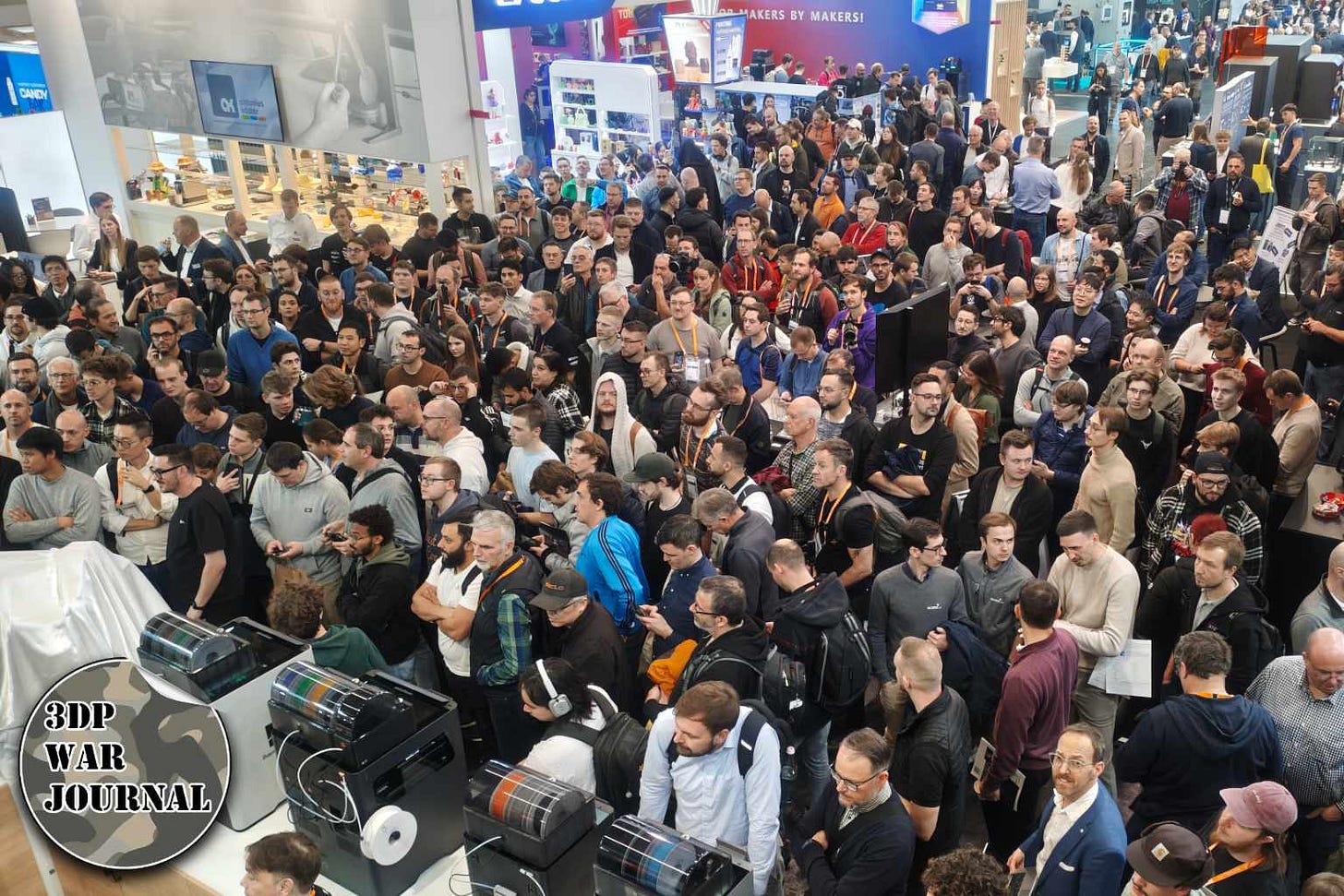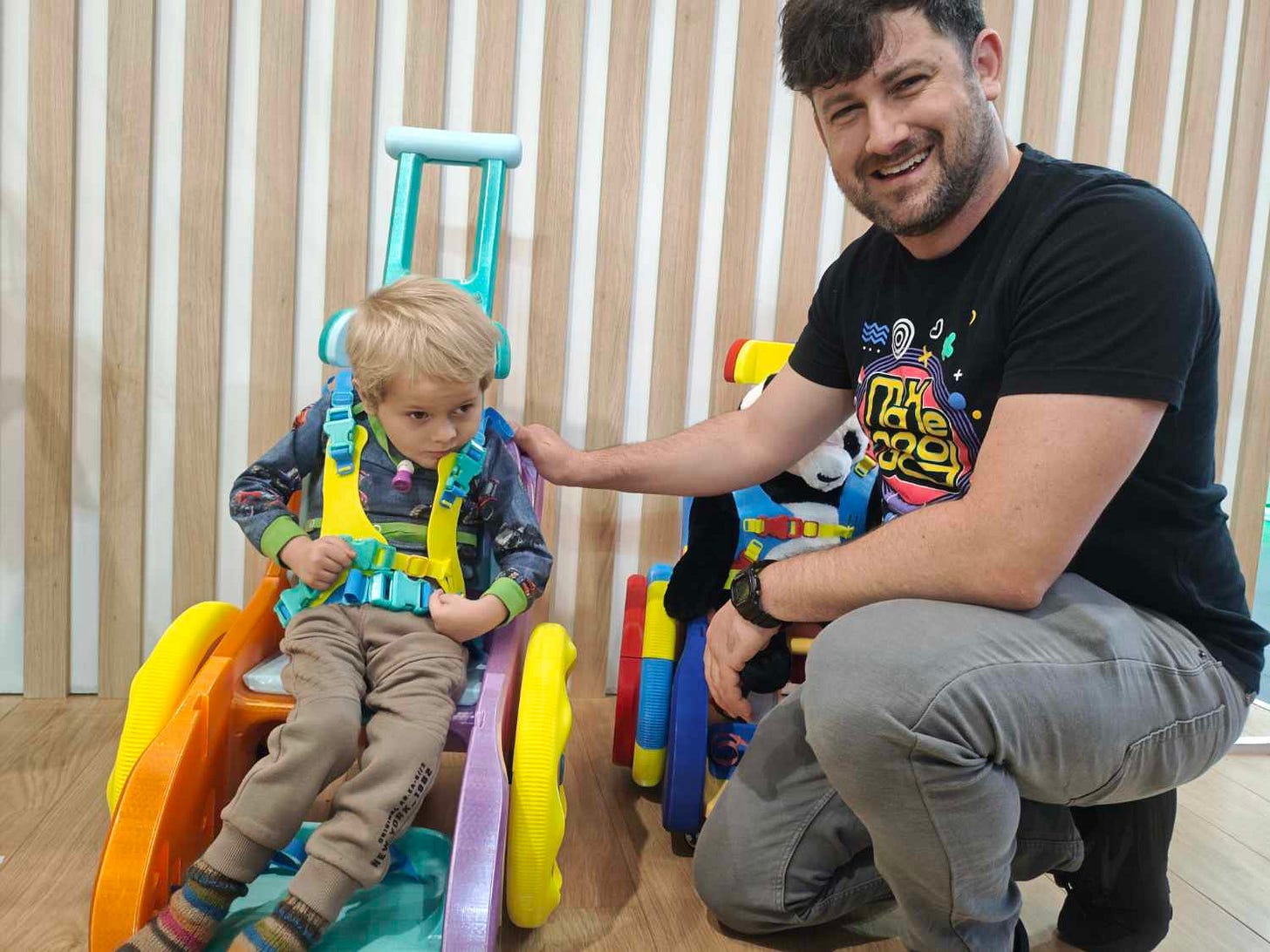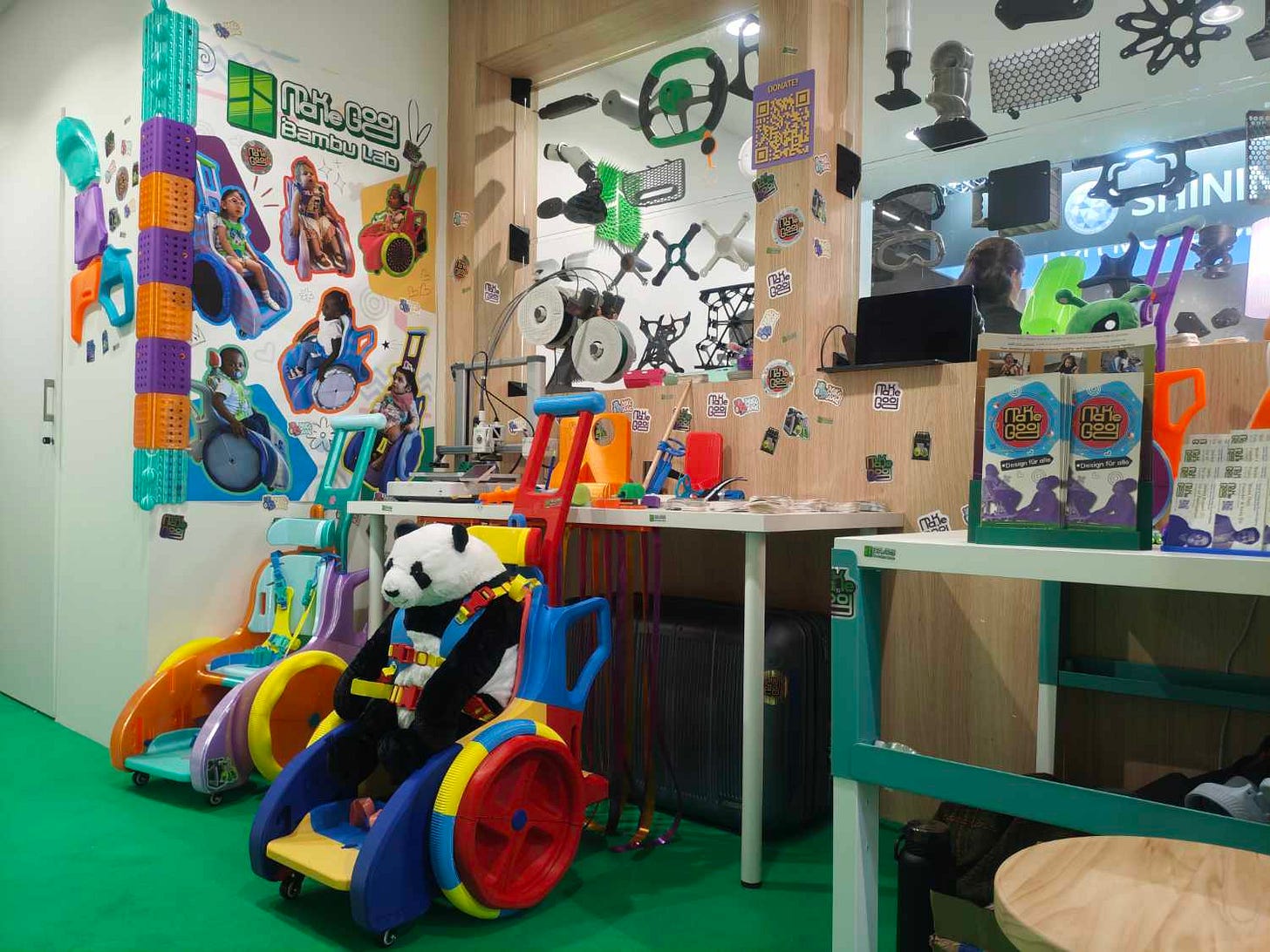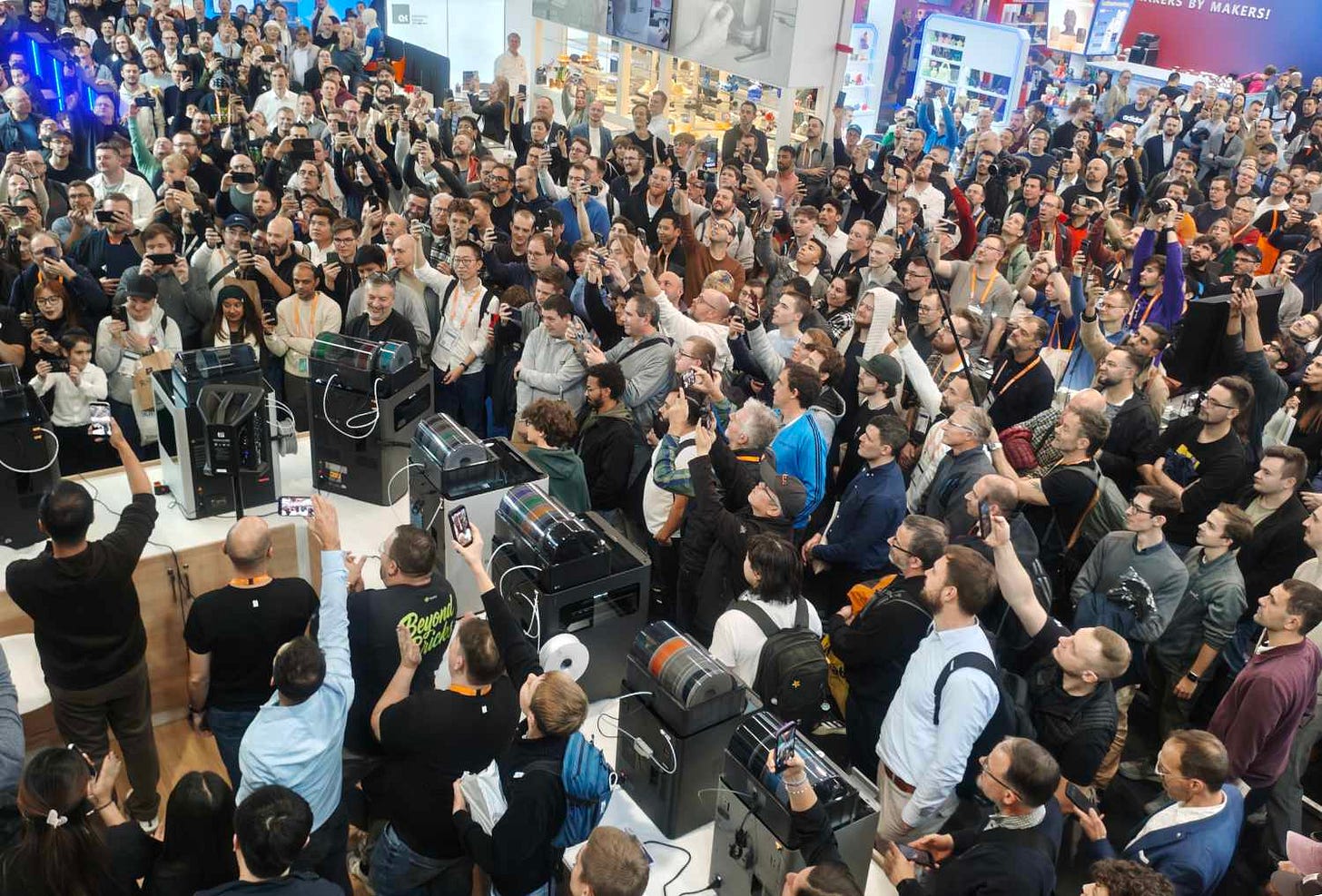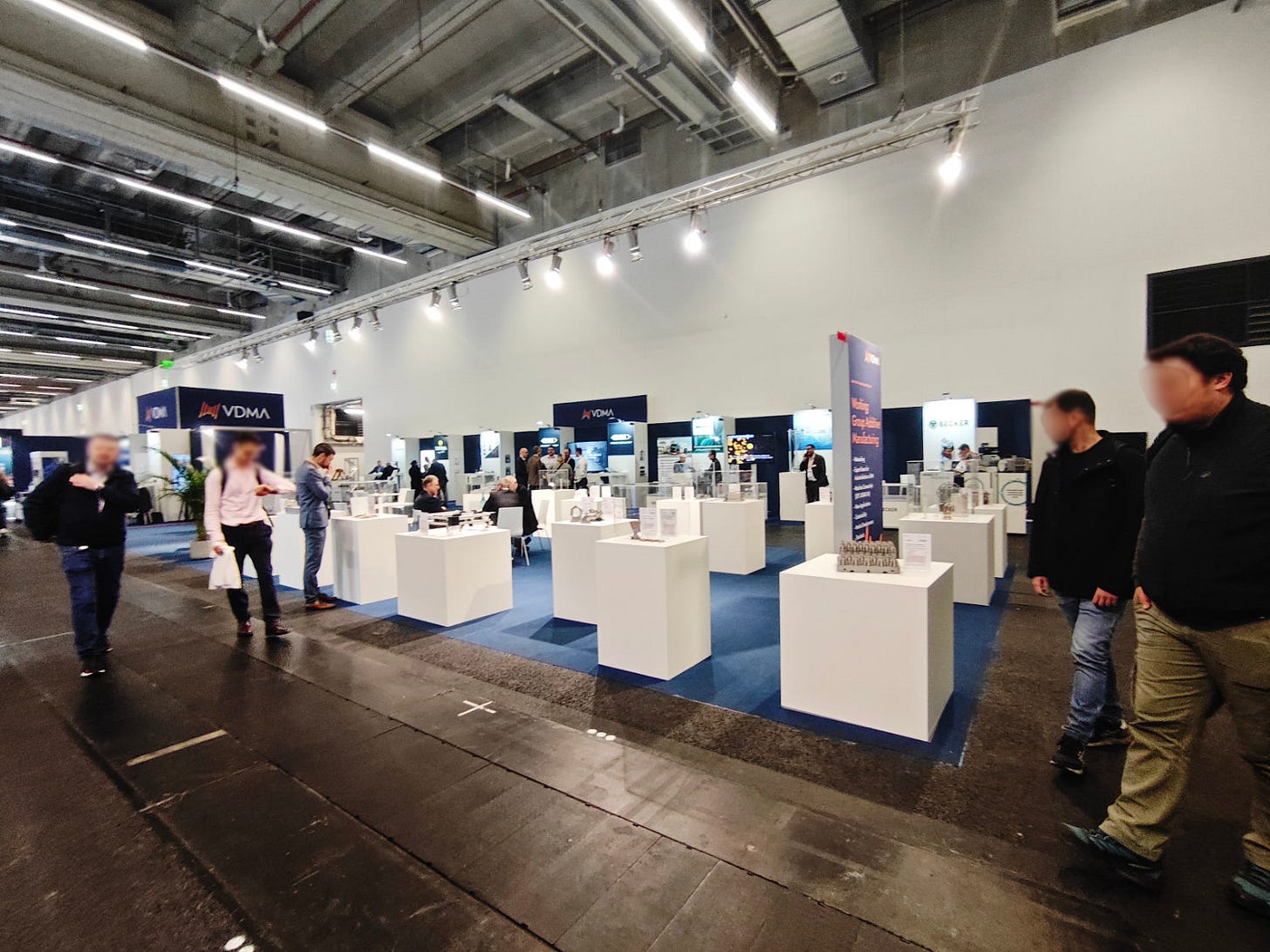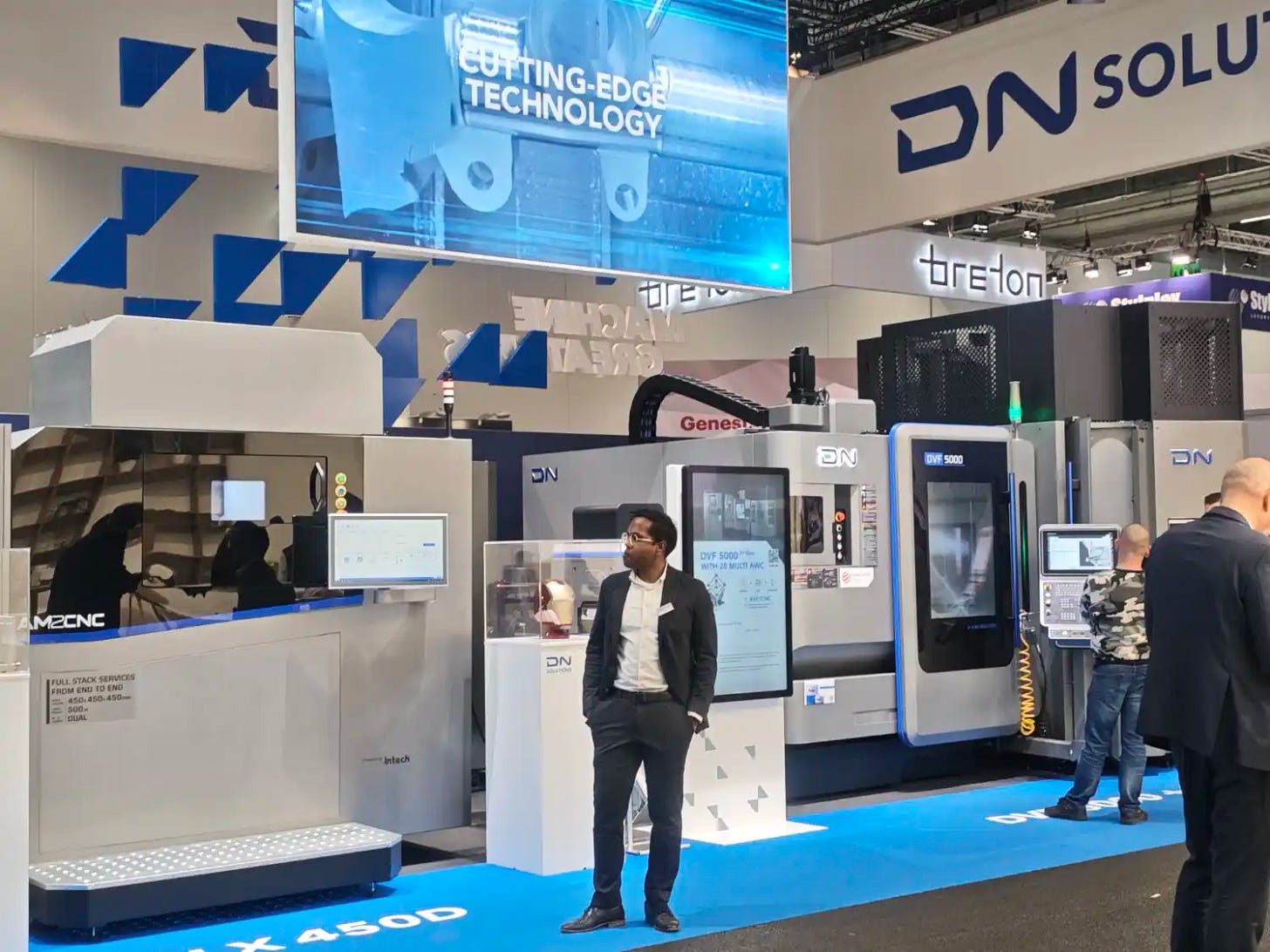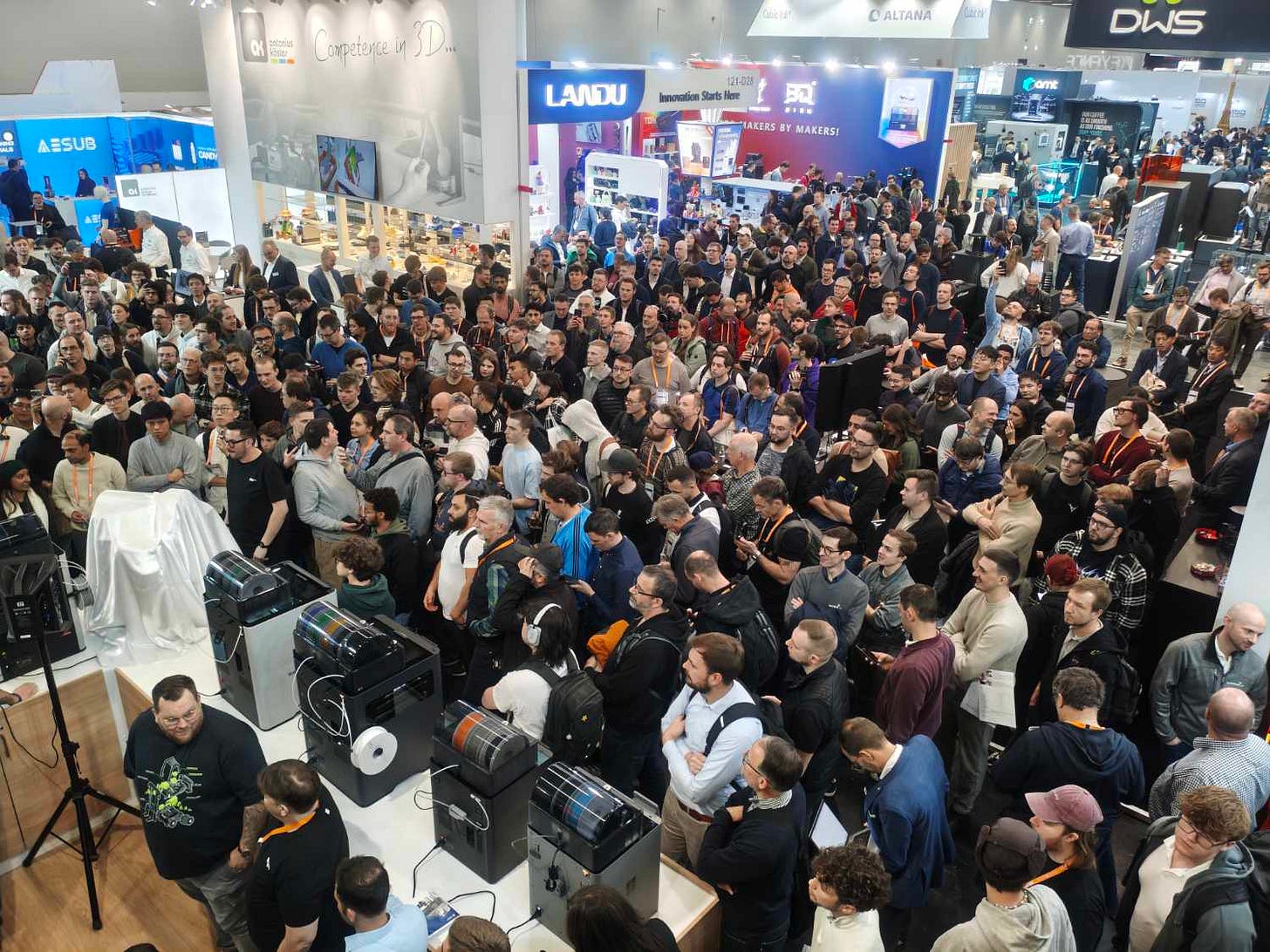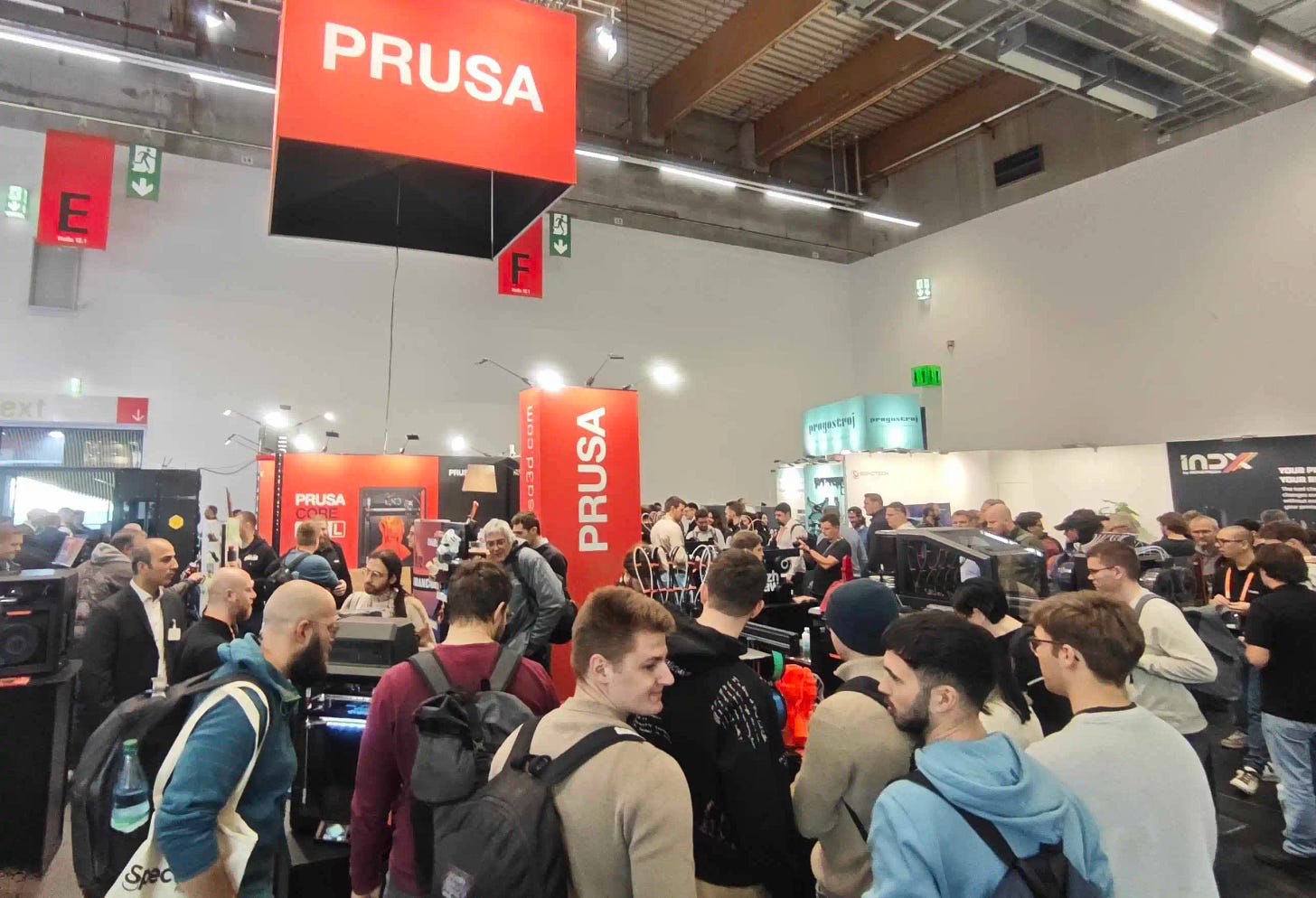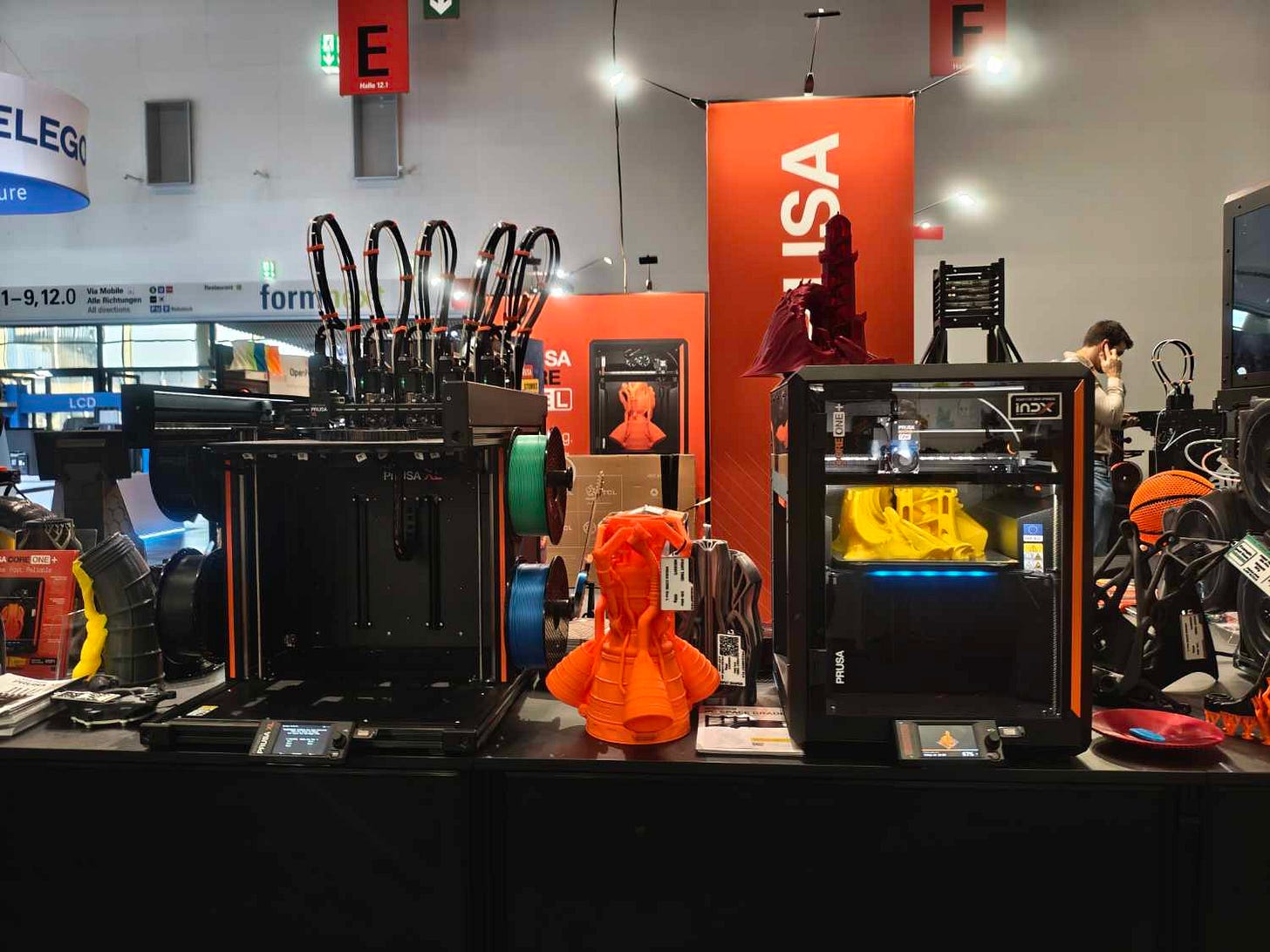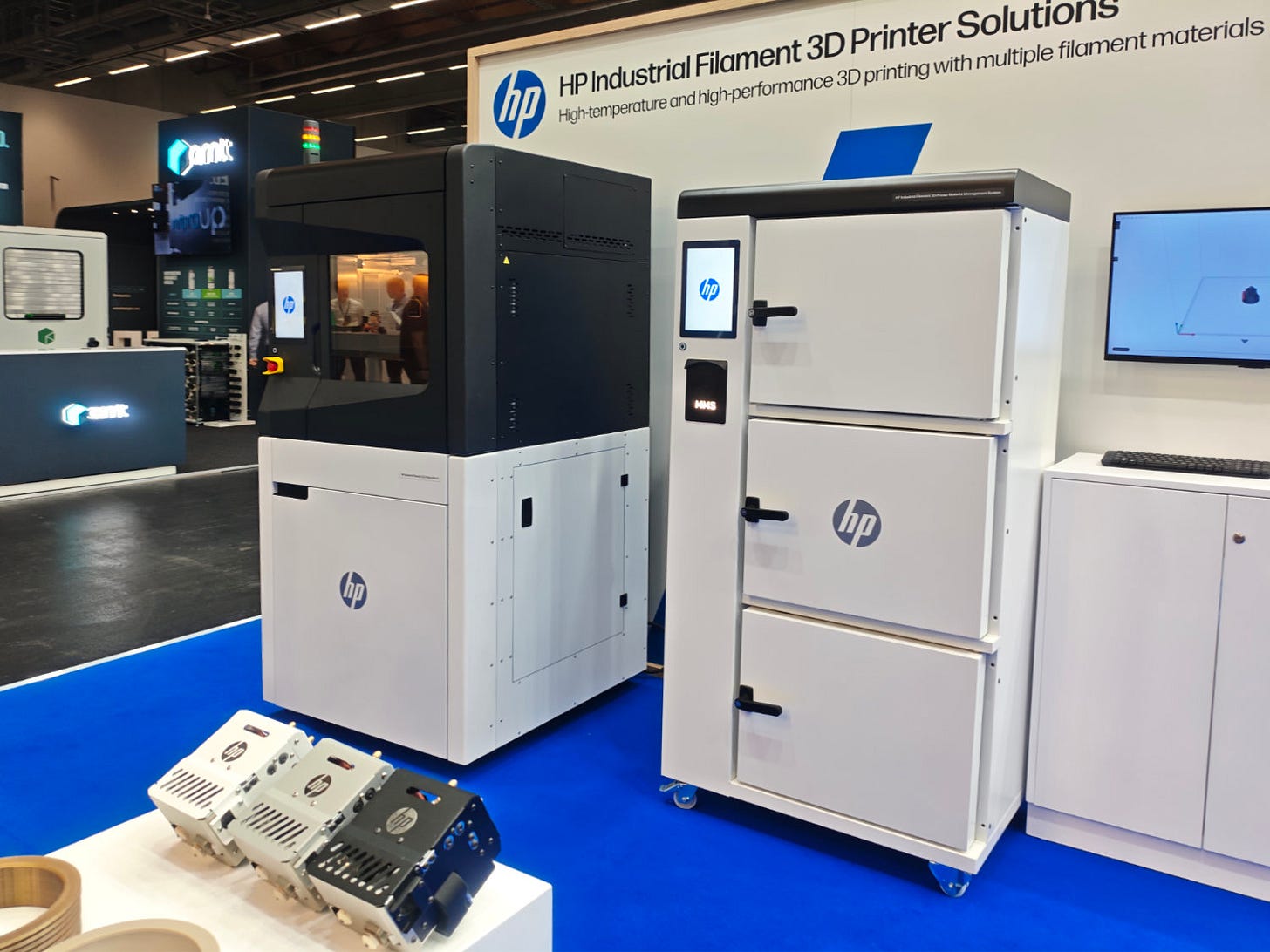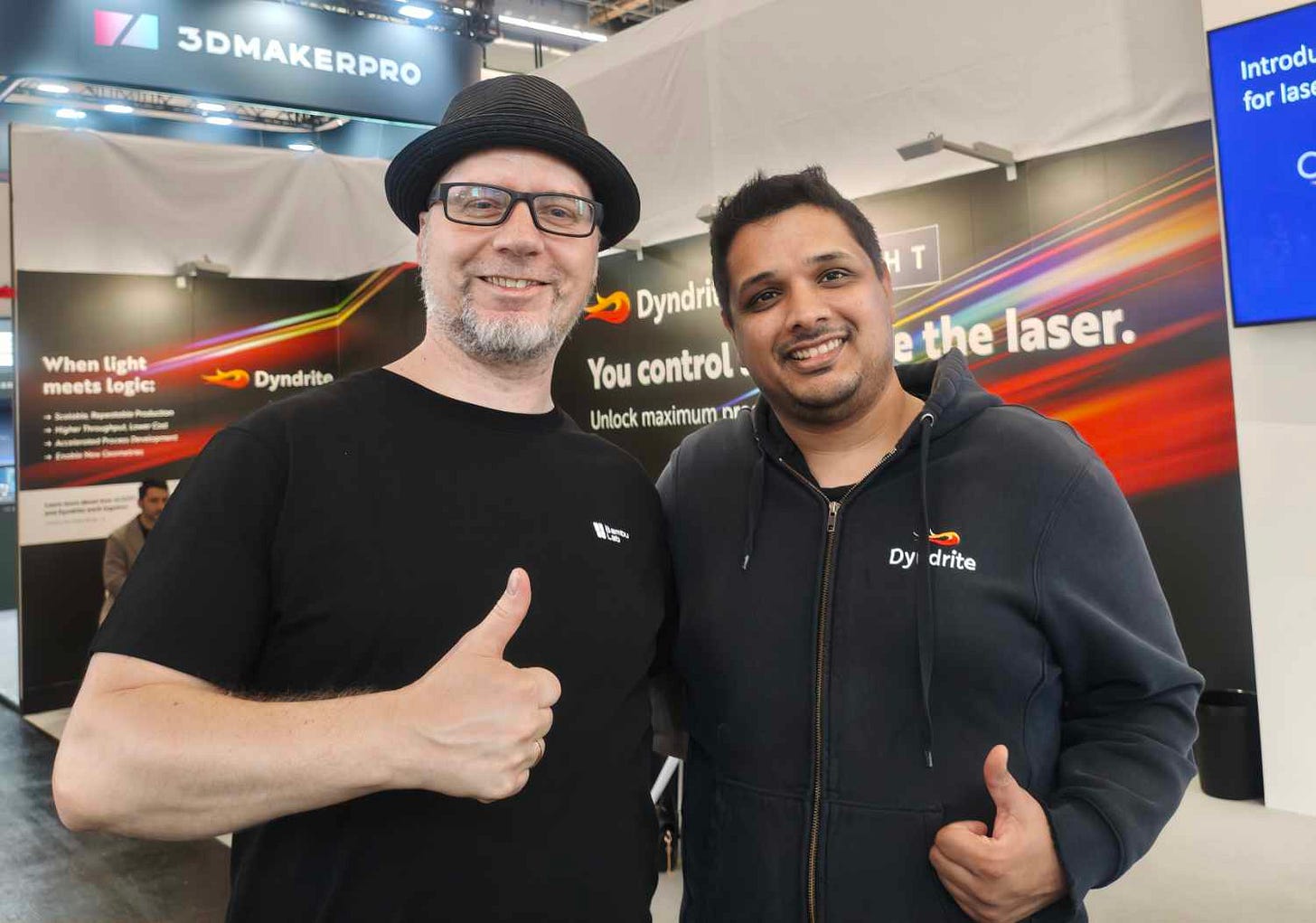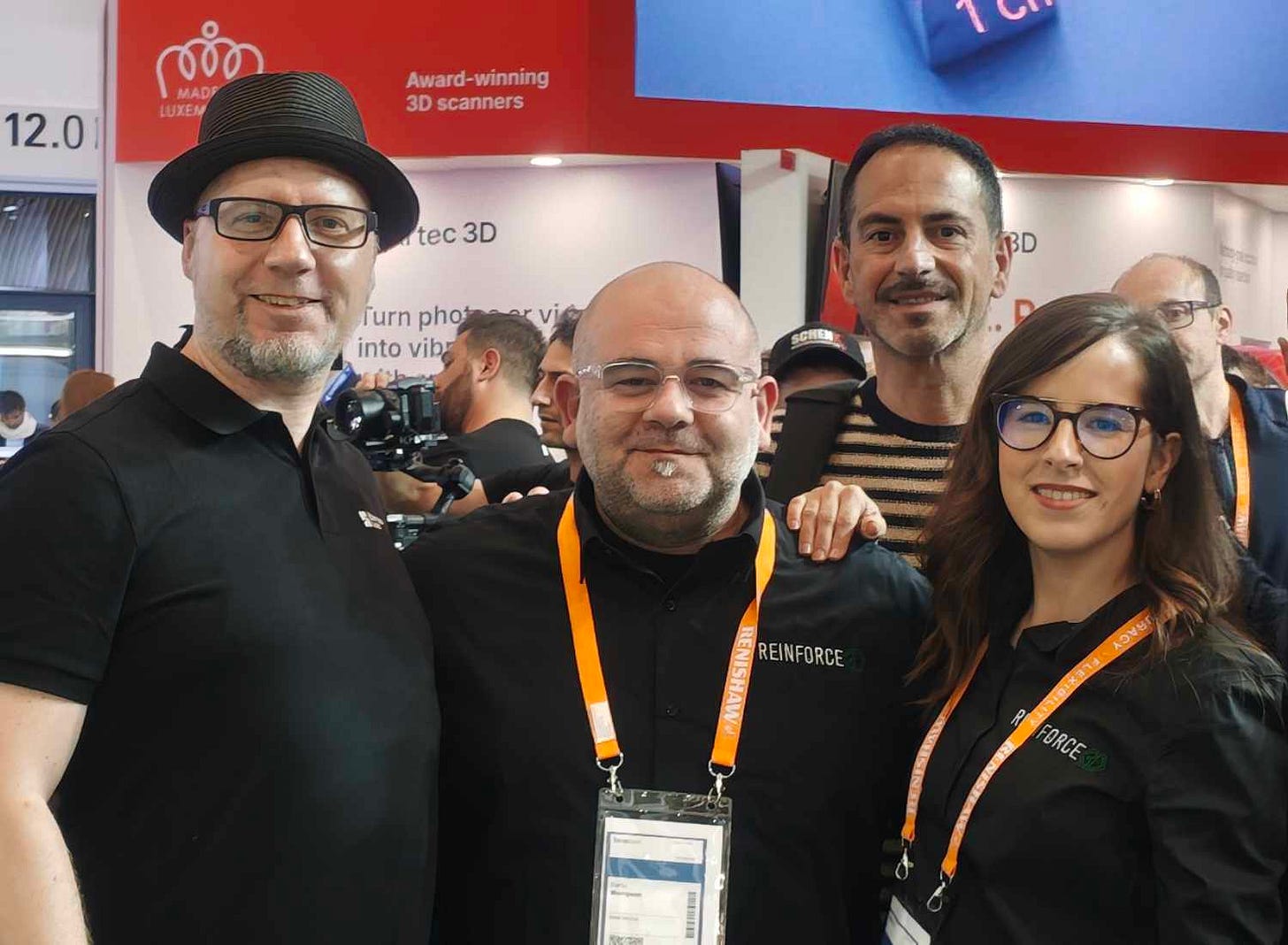I’ve survived Formnext 2025
3DP War Journal #73
Guys, I’d like to officially confirm - I survived Formnext! It was intense - at times even extreme - but it was awesome! Thank you all for coming, for the conversations, and for the meetings!
We’ve just wrapped up the 10th anniversary edition of the world’s largest trade fair dedicated to AM technology. It was my fifth time attending, but the first time as an exhibitor. And while preparing to write this article, I thought I’d do it differently than usual - differently than everyone else.
I won’t be publishing a traditional trade-show summary, and there are two important reasons for that:
I spent 95% of my time at the Bambu Lab booth; my visits to other stands or halls were short; I really only visited a handful of them, so I’m not going to pretend I saw anything, when in reality I know about certain premieres or products only from other people’s reports or media articles.
Instead, I’ll show you what the fair looked like from the perspective of an exhibitor - one who was under constant siege for all four days! I’ll also throw in a handful of rumors and observations you won’t read anywhere else 😉
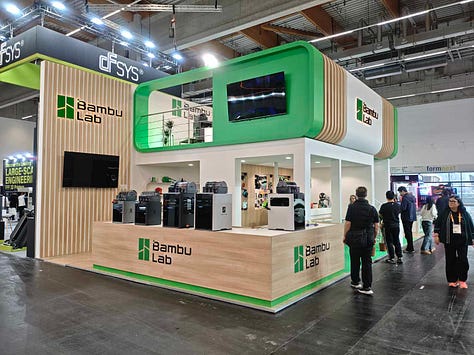
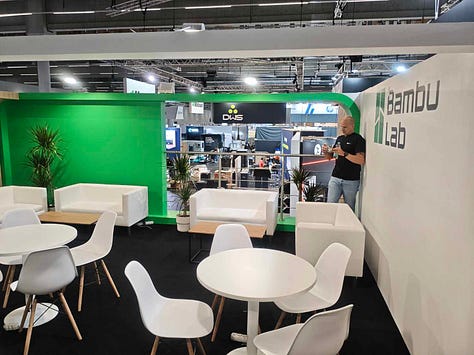

But before we move on, I want to thank everyone I met and talked to. It was an amazing experience. There were moments when you literally had to line up to talk to me and wait a good 15-20 minutes (or come back an hour or two later).
Guys, if I had known it would really be like that, I would have organized things differently. Despite the passing years, it’s still a surprising experience for me - in everyday life I’m a very ordinary, down-to-earth person. The fact that people want to say hi, exchange a few words, or take a photo with me is still extraordinary to me. I don’t plan for it, I don’t expect it - and as a result, it’s all chaos.
So forgive me if you had to wait, or if I couldn’t give you more of my time. Next time I’ll do it better. I promise.
Ok, back to the fair…
My personal Formnext 2025 recap
1. MakeGood & 3D printed wheelchairs
For me personally, this was the biggest discovery of the entire show. I had actually met Noam Platt before Formnext - we had two video calls and exchanged a number of emails - but this is one of those projects you simply have to see in person.
Generally, the idea of 3D-printing a wheelchair for a child sounds absurd. A wheelchair has to be large, but also safe and durable. So you’d assume – if 3D printed - it must be made of metal, or at the very least with SLS or MJF. Right…?
Well, wrong. Noam and his team produce them on Bambu Lab 3D printers. And on one of the cheapest models - the A1.
The whole thing is cleverly designed and fully optimized for 3D printing. It’s strong and durable. It’s designed for easy replacement of damaged parts and simple maintenance, as well as straightforward washing and cleaning.
All parts are made from PETG and TPU. All of them. (Okay, fine - the wheels are fastened with screws and a bearing.)
The project is non-profit. MakeGood even donated one of the showcased wheelchairs to a child at the fair!
I strongly encourage you to support and participate. I’ll be writing much, much more about this soon!
2. The split of the 3D printing market into two independent sectors has become a fact
For all four days, the Bambu Lab booth was constantly packed with dozens of people. The only exception was the first day, when over a hundred showed up for the H2C premiere:
It was similar at the Prusa Research booth and other companies located in our section of Hall 12.1. Additionally, Spectrum Filaments, located right next to us, was running a lottery that also drew lines of dozens of people, creating even more crowding per square meter.
I thought it was genuinely amazing and a spectacular success for this year’s event. But on Thursday, I took a quick walk through Halls 11.0 and 11.1 and… damn, they were genuinely empty (except for the Formlabs booth).
On Thursday and Friday I also went down to Hall 12.0 to visit friends from Amazemet, Meltio, and Reinforce3D, and it was the same there.
Now, make no mistake - for example Amazemet was very happy with the fair and the meetings they held (at least that’s what they said), but it was the first time I saw such a huge divide between the industrial and desktop sectors.
Remember when a few months ago I wrote about the end of the IIIrd Era of AM? And about how the IVth Era would mean a split into two segments - professional and consumer?
Well, Formnext 2025 confirmed this with great force. And it wasn’t just hobbyists and amateurs visiting the Bambu Lab booth - we literally talked to everyone… Small, medium, and large businesses. Representatives of the world’s largest corporations were there (not only industrial ones).
The IVth Era is already here…
3. The H2C premiere was insane
The fact that a record number of people showed up for the launch is one thing. But right before the big reveal, a completely different problem appeared - a major Cloudflare outage that took down half of the global internet.
While we were able to restore our websites fairly quickly, several key online tools we were using needed more time to recover, which gave us a few truly extreme moments. There was chaos with the YouTube stream, and a few people were unhappy about it (and made it clear in the comments). But ultimately the great Guillaume Mouhat and Benjamin Masseron did a titanic job under uber-global pressure and delivered…
4. The Prusa CORE One premiere with Bondtech INDX was weird
Now we’re stepping for a moment into the realm of rumors and speculation. I didn’t see it myself live, but I know someone who did. Actually, I know several such people, and they all claim they saw the same thing.
These people saw that “something” was prepared to be shown already on Tuesday at 10:00 AM. But it didn’t get shown. That “something” was “taller”.
They noticed some “tense” conversations taking place between representatives of company A and company B. As a result, the premiere took place on Wednesday, and what was presented was “shorter” compared to what had been covered up on Tuesday.
These people claim that what was supposed to be shown on Tuesday wasn’t working, and Wednesday’s premiere was a replacement.
I honestly don’t know what to think of this…? That can’t be true, right?
If it were, Jan Homola would have written about it in his trade show summary. If anyone, he would know the truth. But he only wrote that the launch was a huge success.
So I assume this whole story about the non-functioning printer is a smear, an ugly lie, and black PR. Because what else could it be…?
Uhm, rumors are a terrible thing… 😡
Which brings us to the next one…
5. No, Bambu Lab and Formlabs are not merging 🤣
This is the funniest story of the entire show. It started on Wednesday afternoon, intensified on Thursday and Friday, and continues even now. Yes, I’ve already received questions after the fair asking whether it’s true.
Are Bambu Lab and Formlabs going to merge and start producing their 3D printers together?
Where did this idea even come from? That’s the funny part - Dr. Tao (CEO of Bambu Lab) and Maxim Lobovsky (CEO of Formlabs) visited each other’s booths. And someone saw it and started spreading a rumor. Because, well, why would they be meeting like that? For what?
Well, the answer is as simple as it is disappointing for conspiracy theorists - because they know each other.
CEOs of leading companies in a given industry talk to each other. Sometimes about business, sometimes about other things. Just like that.
6. Adult businessmen talk to each other
This may seem surprising to some, but it’s true. In business, people can compete with each other, sometimes very fiercely, but they can still speak to one another like normal, grown adults. During the fair, many different interesting conversations took place, and they weren’t strategic - just friendly and courteous.
For example, the Bambu Lab booth was visited by Dr. Jeffrey Graves – CEO of 3D Systems, who also had a short chat with the company’s executives. A truly delightful person. And the fact that we talked doesn’t mean the companies are merging or acquiring each other.
Sometimes people are simply nice to each other. Just because.
Yes, I know there’s one person who prefers the opposite narrative - that he is good and everyone else is bad. But aside from that one exception, the rest of the AM executives are adults.
7. HP and the big entrance into industrial FDM / FFF
While the rumor about Bambu Lab and Formlabs was funny, and the CORE One INDX launch was weird, the premiere of the HP Industrial Filament 3D Printer 600 High Temperature (HP IF 600HT) was downright bizarre.
Alright, let me clear up the speculation right away - this is a rebranded version of the Polish 3DGence Industry F421 (or whatever number they use).
How do I know? Because the 3D printer was being presented by the people from 3DGence. At first, when I saw them, I thought they had changed jobs and that 3DGence had finally died, but they said no, no - “look Pawel, here it is – our printer for HP for PEEK and other high-performance filaments. Amazing that we managed to keep it a deep secret…”
That was my reaction:
Guys, you kept it a secret because nobody has been interested in you for a long time.
In case you didn’t know and for some reason wanted to find out:
3DGence was founded in 2014 in Poland as a manufacturer of desktop-grade FFF 3D printers
interestingly, their debut appeared on my former portal Centrum Druku 3D, so I sort of consider myself the company’s godfather
in 2016 the company was acquired by Michał Sołowow – one of the richest people in Poland and Europe, owner of Synthos, Cersanit, Barlinek among others, and for some time now involved in the Polish nuclear power plant project
after Sołowow’s investment, 3DGence began producing industrial-class machines – alternatives to Stratasys, Roboze, Intamsys, and others
if you haven’t heard about them before, there is a reason for that
some say the company is doing well, others (former employees looking for work) say quite the opposite 🤔
Overall, I could share a handful of my thoughts on the subject, but it’s really not worth it. Maybe something will come out of this, maybe not - whatever… This is not a case for 1000 3D printers sold per month. Not even 100. And anything below that is irrelevant these days.
8. TPM3D entered the low-cost SLS market
It was announced just before Formnext, but it still sounds quite intriguing. TPM3D is one of the longest-operating Chinese companies in the professional AM sector, specializing in SLS since 2008. In the mid-2010s, Stratasys even held shares in the company.
The CF200 is intended to be the first real competitor to Formlabs since Sintratec and Sinterit. Rise3D was also supposed to be one, but after the loud announcement earlier this year, it has been rather quiet around that solution.
So I’m curious how TPM3D will do. For Formlabs, the SLS segment is a strategic revenue source, so any competition here is by definition a threat. But we’ll see… TPM3D has been in the market for nearly 20 years, yet when I ask people about them, no one seems to know them… Will that change now?
9. Dyndrite reshapes metal AM
I love Dyndrite. What Harshil Goel and his team are doing for the metal AM sector is a revolution on the scale of moving from MS-DOS to Windows, or from typewriters to Word. Dyndrite has developed developer tools that make metal 3D printers stop being unpredictable and insanely difficult to operate.
I finally had the chance to meet Harshil in person (until now we only spoke via video), and it was a truly fascinating conversation. It’s unbelievable to me that the industry waited 30 years to reach the level it is at today. Harshil is the architect of that transformation.
10. One of the biggest sleepers at Formnext
Reinforce3D is one of those companies doing something exceptional, revolutionary, and compatible with every technology, yet for some reason people get excited about something else (e.g. HP’s first high-temperature FFF 3D printer).
I met Blanca and Bartu at the beginning of the year while working on the Spanish edition of The 3D Printing World Guide. They immediately caught my attention because they were different and working on something genuinely useful – injecting continuous carbon fiber into 3D-printed structures, which on the one hand dramatically enhances part strength, and on the other allows for permanent joining without adhesives.
I’m thinking about dedicating a separate article to this amazing solution in the future.
Last final word
I would like to sincerely thank the entire Bambu Lab team, with whom I spent an extremely hard but exciting week in Frankfurt. You are wonderful, and I’m very proud to be part of this group!



